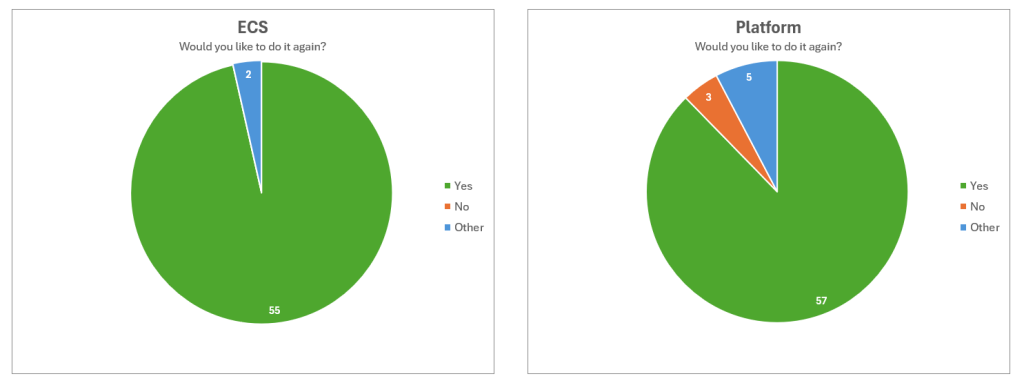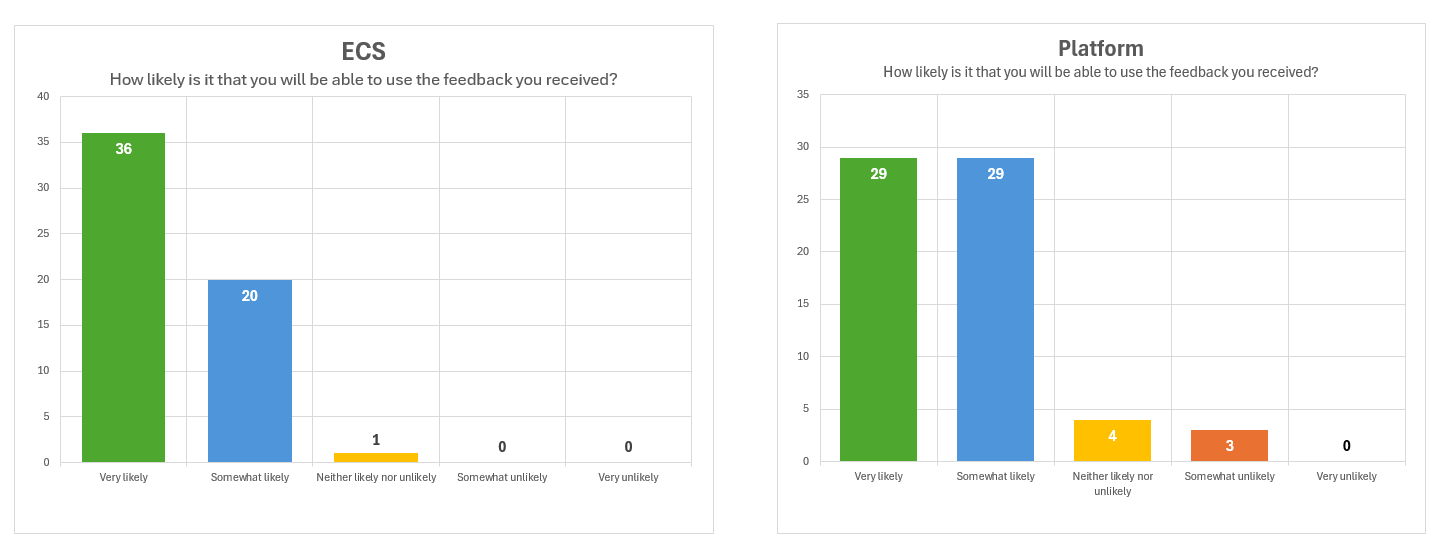This year, our teams wrapped up nineteen Big Room Feedback sessions. Five more than last year. And more than any other company in the industry. As pioneers in integrating Big Room Feedback, we’ve set a new benchmark for fostering a culture of open, actionable feedback, a concept that many organizations still grapple with.
As we reflect on this achievement, we wanted to take a moment to share some insights with you. These insights might help you in your search for the ideal performance feedback tool for your agile organization.
Big Room Feedback, what’s that all about?
Chances are you’ve never heard of Big Room Feedback. And that’s not your fault. Because the Big Room Feedback format is a performance feedback format cultivated at Skyline Communications. It’s designed to deliver honest, fair, and actionable feedback within a transparent face-to-face setting — an ideal tool for agile organizations.
How does Big Room Feedback work?
We’ve previously released a detailed blog post that deep dives into the topic of how we organize our Big Room Feedback meetings at Skyline. Definitely worth checking out!
And if you don’t feel like reading, then you’re in luck. Our global agile lead, Bram de Block, was invited by Scrum Masters of the Universe to talk about our newest feedback format. And fortunately, there’s a recording available!
Why did we introduce the Big Room Feedback format at Skyline?
As an agile organization, we are constantly looking for more effective agile ways to foster evolution, both on an individual level and as a cohesive team.
Our aim is to create an environment where each member contributes to that collective growth. And we feel that providing actionable feedback to colleagues you collaborate with daily is a key aspect of this process.
Additionally, this practice also provides the direct manager with a broader and more contextualized perspective. This input becomes a valuable element, as one of the many aspects considered in performance evaluations.
What our colleagues think of Big Room Feedback
To measure the effectiveness of our Big Room Feedback format, we sent out three questions to every participant. Here are the results.
They are hooked
When we asked all teams whether they would like to continue with the Big Room Feedback format, over 90% answered “yes”:

“Would you like to do it again?” Answers were collected from our two Skyline tribes, Engineering and Consultancy Services (ECS) and Platform.
Actionable feedback
Why do they like it so much? Because most participants found the received feedback valuable and actionable, as indicated when we asked, ‘”How likely is it that you will be able to use some of the feedback received?”

“How likely is it that you will be able to use the feedback you received?” Answers were collected from our two Skyline tribes, Engineering and Consultancy Services (ECS) and Platform.
Good can always get better
While concluding our previous round of BRF sessions, last year, we also asked all participants what could be improved. It was after all a first for everyone. Even though most of this feedback has been implemented in this year’s BRF sessions, we still believe it’s valuable to see which concerns our teams had at the outset.
Hybrid/remote sessions
💡 Initial feedback after round 1: When conducting hybrid or remote sessions, make sure to have top-notch facilities available, including excellent audio and video equipment, for an optimal experience.
🔄 Outcome: As soon as the date for the BRF is set, we book our best boardrooms, which boast the most advanced video conferencing equipment.
Balance
💡 Initial feedback after round 1: Keep striving to get that balance between thoroughness and staying within the timebox. Correctly splitting larger teams can aid in achieving this.
🔄 Outcome: Our teams have now been empowered to split their larger teams into whatever they think is best — self-management for the win! By now these teams have experienced one or more BRFs and understand the tradeoff; their experience enabled them to make the best decisions on how to split the teams to get valuable feedback and stay within the timebox.
Reacting to feedback
💡 Initial feedback after round 1: Allowing some initial reaction to the received feedback summary. (Due to limited time, the person receiving the feedback did not get the chance to respond to the received feedback.)
🔄 Outcome: We still avoid reacting to feedback during the BRF session out of time limitations. However, we make up for it during the first team Retrospective following the BRF, where the initial reactions are shared and clarified within the team.
Scoring expectations
💡 Initial feedback after round 1: For experienced teams, consider empowering them to score each other to indicate how well their colleagues meet their personal expectations.
🔄 Outcome: On their request, Our Data Exploration team started experimenting with giving each other a “below/meets/exceeds expectations” score. We will continue to do this for any team requesting this but will not enforce it for all our teams.
Additional feedback
💡 Initial feedback after round 1: Some colleagues were disappointed with the limited number of ‘grows’ received. In these instances, we will inquire about the team’s expectations for the individual. This can still provide valuable insights for the person, even when explicit growth points are minimal.
🔄 Outcome: The BRF facilitators have been trained to ask follow-up questions that provide additional gifts of feedback for people who did not get many.
Memory trigger
💡 Initial feedback after round 1: We might re-introduce the practice of having the Product Owner bring a list of topics the team worked on in the past 6 months, to serve as a memory trigger.
🔄 Outcome: We did not reintroduce this practice but instead have come up with a sort of “cheat sheet” to help team members reflect on the performance of their colleagues on different levels without steering that feedback.
Closing thought: give your glows the attention they deserve
It’s a common pitfall to only view your areas of growth as actionable. While addressing your ‘grows’ is strongly encouraged, dedicating effort to enhance your glows (strengths) can be equally or even more rewarding, especially when you witness yourself reaching stellar performance.
Skyline Communications (often abbreviated to Skyline) is the company behind DataMiner, the modular open monitoring and orchestration software for ICT media and broadband platforms.

You might also like

BLOG
Peer feedback is an essential component in evolving as a person, a team, and an organization. Additionally, it’s also a great evaluation tool. In this post, we share some ideas on different kinds of peer feedback.

Awesome!